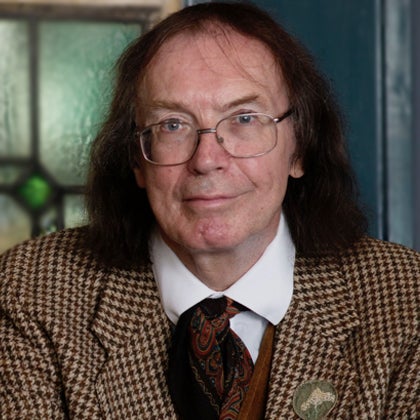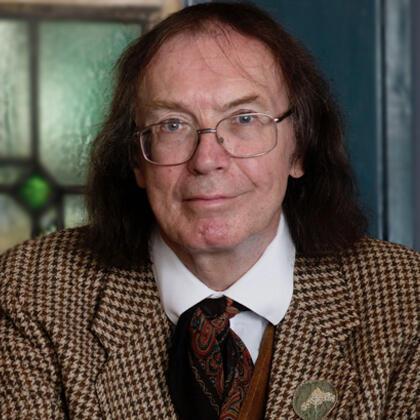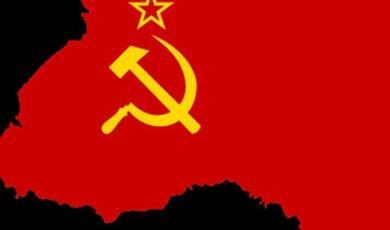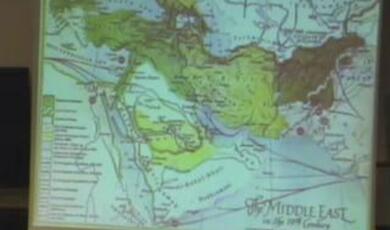Were There Pagan Goddesses in Christian Europe?
Share
- Details
- Text
- Audio
- Downloads
- Extra Reading
This lecture considers a set of superhuman female figures found in medieval and early modern European cultures - Mother Nature, the roving nocturnal lady often called Herodias, the British fairy queen, and the Gaelic Cailleach. None seem to be surviving ancient deities, and yet there is nothing Christian about any of them either. Do they force us to reconsider our own existing terminology when writing the religious history of Europe?
Download Text
Were There Pagan Goddesses in Christian Europe?
Professor Ronald Hutton
8 November 2023
The Problem of Definitions
The Traditional View
This talk hinges on the question of how far ancient paganism survived in Christian Europe. During the nineteenth and early twentieth centuries, many scholars expressed a belief that, by some definition and in some form, it had indeed survived through the European Middle Ages, and far into the early modern period. Two very different forces united to create this tradition. One was almost as old as established Christianity itself: a desire to police the boundaries of that Christianity by condemning anything that did not conform with strict orthodoxy – especially elements of popular belief – as ‘pagan’. It was a trope of evangelical and reforming clergy through the centuries. The second was distinctively modern: a desire to undermine Christianity, and to break its cultural dominance, by suggesting that even in its apparent medieval and early modern heyday, its hold had never been as complete – especially among ordinary people – as had been claimed.
Revisionism
Perhaps because of the increasing transition to post-Christian cultures in the West, both forces weakened during the later twentieth century. By the 1990s, historians tended to make a distinction between ‘surviving paganism’ and ‘pagan survivals’. A unanimous agreement had apparently been reached among them that there was no surviving paganism in any area of Europe for more than one or two centuries after its official conversion to Christianity. In other words, no coherent and self-conscious pagan resistance movement persisted anywhere in the continent, with a retention of allegiance to pagan deities in preference to Christianity.
By contrast, there was equal unanimity that large numbers of ideas, figures, stories, spells, customs, and motifs had been taken into medieval and early modern culture from ancient paganism, and some proved remarkably enduring. These spanned the fields of architecture, art, literature, magic, medicine, and folk tradition. Scholars were not unanimous regarding the extent of this importation, or the spirit in which it was conducted, or whether specific phenomena should be assigned to it or not. Nonetheless, the general principle was accepted.
Post-Revisionism
From the 1990s, however, some colleagues began to reject the term ‘pagan’ altogether for these borrowings, proposing instead that terms like ‘lay Christianity’ or ‘religious folklore’ should be employed instead. My lecture is intended as a response to these views, not with the intention of refuting them, but of recasting the basic terms of the discussion. I am going to look at a set of figures found in the medieval and early modern imagination, which do not seem to me to fit very well into the categories of pagan or Christian. One of them is found in learned and elite culture, and three in popular culture. The latter seems to me to be the more interesting and significant, but the former also has its place in this discussion; and I shall deal with it first.
Mother Earth or Mother Nature
Appearance
This first figure consists of a mighty female thought to represent the natural world, the terrestrial realm or (sometimes) the cosmos below the level of heaven. Certainly, the Greeks and Romans had conceived of such a being, the Greek Gaia and the Roman Terra Mater (literally, Mother Earth). In that sense, her presence in medieval and early modern texts could be called an inheritance from the ancient world, and she might even be termed a pagan survival. In another sense, however, such terminology is questionable. This is because such figures featured in ancient culture mostly as allegorical beings in literature, having little actual worship attached to them and no major cult centres. The ancient peoples who have left records could conceive of them as abstractions but had not much use for them in religion. This may have made it easier for Christian culture to find a place for them.
Development
Such a theology, of finding a place for this sort of divine female entity within Christianity, was especially developed by some of the savants of the twelfth-century Renaissance. They pitched on the figure of Natura, ‘Nature’, which had been developed by pagan poets at the very end of the ancient world. The greatest of all late antique Christian theologians, Augustine, had sanctioned regard for her by calling her a teacher of truth, appointed by the deity himself. Moreover, he regarded her as possibly an animate being.
This made it the easier for later medieval scholars to embody her. She was represented as a divine female in Christian texts between the fifth and eleventh centuries, but it was the school at twelfth-century Chartres which really took her up. There, Bernard Silvester made her a divinity sprung from God and given the task of calling matter into being, remaining the force which engendered fertility and procreation. Alan of Lille called her the agent of God in earthly affairs and fashioner of humans. He represented her as a virgin crowned with stars and riding in a glass coach drawn by peacocks and attended by a train of spirits personifying the virtues.
A century later, in the Roman de la Rose, she became a being of inexpressible beauty created by God to govern the universe on his behalf. This idea was taken into English letters by Geoffrey Chaucer and John Lydgate. In the early modern period, it was transmuted into the philosopher Plato’s cosmology, by speaking not so much of Nature as of a world soul, standing between God and the earth, and functioning as the fount of life and inspiration. She was identified in pictures with the night sky. It is but a short step from here to the nineteenth-century Romantic preoccupation with the divine feminine as both, or either, a moon goddess and Mother Earth. None of the medieval and early modern expressions of such a figure represented serious theology. They were all forms of poetic allegory, but the consistency with which this preserved such an image is striking.
I have already, however, laid more stress on popular treatments of supernatural females than those of high literary culture, and it is time now to turn to the three of those which I would regard as especially significant. One is British, one Western European, and one Gaelic.
The Fairy Queen
Appearance
The British one is the fairy queen, who seems to have been a distinctively late medieval creation. The Anglo-Saxons certainly believed in fairy-like beings, whom they called elves, but we know very little of certainty about them, save that they were supposed to blight people with physical maladies. English texts of the twelfth and thirteenth centuries contain a lot of information about fairy-like beings which was to pass into later fairy lore, and which was reported at all levels of society. It included the concept of a parallel realm of human-like beings, superior in some respects to humans, with its own ruler. This was not, however, a consistent motif, and there seems to have been no coherent belief system to contain and explain such beings. High medieval intellectuals struggled and failed to create a general category for them.
This was to be developed ultimately from a different genre, that of literary chivalric romance, which was composed for and consumed by ruling elites and represented patently as pure fantasy. The featured characters usually called ‘fays’, who had sumptuous lifestyles resembling those of the same elites, and wielded superhuman powers. The French word ‘faie’ was to supply the genesis of the English word ‘fairy’, as it entered Britain via the medium of these romances.
By the opening of the fourteenth century, the literary tradition was apparently blending with a popular one, as English churchmen began to condemn people who believed in beautiful female spirits who danced at night in wild natural places. The position of a queen among such beings, with or without a male consort, emerged in French and English literature around the same time. By the end of the fourteenth century, the fairy queen, or ‘elf-queen’, was becoming fully established in English letters, featuring most famously in the work of Chaucer.
Zenith
By the early fifteenth century the literary construct of the fairy kingdom, in which the queen was the more prominent ruler, was fully established, and found in Scotland as firmly as in England. Until now, ‘faerie’ had meant ‘enchantment’, rather than signifying a type of being, but that transition had been made by the fifteenth century. Furthermore, the concept of the queen of fairies had got firmly into popular culture. By 1430 it was found used in England by criminal gangs, maniacs, and confidence tricksters, and village magicians were claiming to have learned their skills from the fairies. The use by English commoners of what had been a French word, faerie, specifically related to the actions of beings known by the French word fay, shows how much this tradition had been imported from the romance literature.
Thereafter it remained a major theme of both popular culture and literature, all over England and Scotland, for the remainder of the early modern period. Poets and playwrights regularly portrayed the fairy queen in their work, her most celebrated appearance being as Shakespeare’s Titania. Sometimes, like Titania, she had a royal consort, and sometimes not. She was also, however, just as prominent in the beliefs of ordinary people. Across most of Britain, popular magicians – known as cunning or wise folk – claimed to have been taught their craft by her, or her minions. Those accused of witchcraft sometimes likewise claimed to have enjoyed her favour, and confidence tricksters quite frequently defrauded their victims by promising to obtain those favours for them. What is really interesting about all this is that fairies in general often still retained the character of Anglo-Saxon elves, of blighting humans or stealing their children. Their queen, however, was almost invariably viewed in positive terms, as a benevolent and capable protectress and benefactress.
The Lady of the Night
Characteristics
The second really significant supernatural female whom I would identify in medieval and early modern popular tradition appeared much earlier than the fairy queen, in more mysterious circumstances, and belief in her covered a much larger geographical area. She travelled the night with a retinue of spirits and/or special human beings, and was known as Diana, Herodias, Holle or Holde, Percht or Bertha, Bensozia, Sacria, Abundia and Sybilla, and by a host of local names. Quite commonly, and especially in Italy, she was simply ‘the Lady’, and her retinue the ‘blessed’ or ‘good’ ladies, or ‘the ladies of the night’. What she and her followers generally did was to visit the houses of favoured humans, usually the better behaved and cleaner in a community, and bless them with good fortune. They often feasted there, but what they consumed was miraculously restored as they departed. Sometimes they held a revel of their own in some rural place, which is why in Italy the Lady’s court was often known as ‘the good game’.
Three aspects of this tradition seem consistent. First, it was a belief of commoners, and especially of poor women, and sometimes of men of the same class. Their claim to travel with the Lady gave them a status which normally they would not have possessed. Furthermore, the activities in which they said they took part represented a classic piece of wish-fulfilment for an underclass: to become favoured members of a supernatural royal court and visit the houses of the wealthier to feast to their heart’s content. Second, the women who claimed to rove with the Lady were often or mostly the folk magicians of their communities. Like those in Britain who attributed their skills to the tuition of fairies, they frequently said that they had learned their magic from her and her companions. Third, the tradition seems nowhere to have involved any actual group activity. The travels of the humans who claimed to join these female phantasms were experienced in their minds, while their bodies remained static.
Range
The first reference to these beliefs comes from the ninth century, in the famous edict known as the canon ‘Episcopi’, which regarded them as already shared by a large number of people. For the first three hundred years, they are recorded in texts from the Frankish lands, with their epicentre in the Rhine valley. During the rest of the Middle Ages, they spread out over most of the French and German speaking areas, across Italy and Sicily and into Spain. By the early modern period they were contracting again, vanishing from most French-speaking regions. There is no solid evidence that they ever reached Britain, though they may have helped to influence the developing figure of the fairy queen there.
The Problem of Origins
So, where did this idea come from? The obvious answer, which is indeed the one which has always been made, is that it derived directly from ancient paganism, and from the cult of a pre-Christian goddess. This remains entirely possible, but it seems very hard to prove.
The names given to the superhuman leader by churchmen, from the ninth to the sixteenth century, were Diana and Herodias. Diana was indeed an ancient goddess of the night and wild places, but she was a Roman one, with no widespread popular cult north of the Alps. Nor did myth portray her as sweeping up human followers. Moreover, when those who claimed to rove with the Lady were interrogated by the authorities, it was churchmen who named her Diana, while her followers gave her other names associated with abundance, generosity, wisdom, and stateliness. It may be, as the great Italian historian Carlo Ginzburg thought, that the churchmen concerned were influenced by classical learning; or it could simply be that Diana is the only pagan goddess found in the New Testament, and indeed the only European one in the whole Bible. Likewise, Herodias is the wickedest woman found in the New Testament; and a twelfth-century legend actually explained how she came to develop from her Biblical persona to being the leader of the night rides. The distinguished French scholar Claude Lecouteux proposed the Greek Hecate as the ancestor of the medieval Lady. She was associated with the night, witchcraft and the dead, and known to the Romans. However, she was never portrayed as the leader of a retinue of earthbound spirits.
Recognising this, Ginzburg proposed two other contenders, both of which had enjoyed huge popularity under the Roman Empire, with an epicentre in just the right place, the Rhineland, for the appearance of the medieval myth. One was Epona, goddess of horses and patroness of their welfare and fertility, and so worshipped by riders. However, she was never shown with a retinue of any kind, while the medieval spirits, when they did ride, used wild beasts as their steeds and not horses. The other cult was of the Matres or Matronae, the Mothers or Ladies. They were portrayed as three stately women, standing or (more usually) seated in a row, and holding symbols of prosperity such as bread, fruit, and flowers. As such, they could make plausible originals for benevolent female superhumans who might visit and bless houses at night; but they were never shown with a retinue or in motion and never associated with animals. Conversely, the medieval ladies never travelled in trios.
There is therefore no goddess or set of goddesses attested in the whole of the archaeological record which makes a good fit with the medieval ladies. There remains a possibility that a pagan Germanic cult, from outside the Roman empire and so outside of ancient societies that left literature, inscriptions, or religious artwork, lay behind them. On the face of things, however, a Germanic origin for the medieval myth seems a little unlikely, given that the most thoroughly Germanic lands, far to the north and east of the empire, did not contain that myth. Its recorded range was mostly within the former Roman empire. It remains possible that ancient goddesses lie behind the Lady’s German names, Holle and Percht, but the linguistic evidence is dubious. Percht is not recorded before the fourteenth century, and her name seems to derive from the Christian feast of the Epiphany, when she was most active. Holle, or Holda, is recorded earlier, from the eleventh century, but her name seems at first to have been used of the night rides themselves. She therefore seems like a personification of them.
Scholars of ancient German mythology have often used medieval Norse literature to try to plug the gap left by the absence of evidence from ancient Germany. That is indeed full of revels by non-human beings, to which human magicians could fly in spirit. These revels were not, however, mainly female, and had no identifiable leader. There are superhuman females called Valkyries or Disir in the literature, who ride through the air, sometimes in troops. They never however ride behind a leader or invite living humans to join them. Modern Scandinavian folklore sometimes made the Norse god Odin leader of nocturnal cavalcades. In the medieval literature, however, he is a solitary traveller, and only one text associates him with the night revels of spirits, which he breaks up in anger.
The Nature of the Myth
There is therefore no clear pagan progenitor at all for the Lady of medieval myth. It is entirely possible that the latter was assembled from aspects of a variety of ancient cults, but that would still make her a medieval creation. There is even a slight possibility that the original inspiration was actually Christian, and that it was adapted from legends of female saints who visited houses to bless them. There is however no evidence for this at all, and the medieval Lady was neither saintly nor had any Christian associations.
It is interesting in this context to note that the churchmen who condemned the belief all through the Middle Ages knew what both paganism and heresy looked like and didn’t think that it belonged to either category. They treated it instead as a rather silly popular superstition, carried on by people who were otherwise orthodox Christians, at least until in a few places it eventually got mixed up with the new early modern stereotype of the satanic witch.
What we seem to have in it, therefore, is a long-lived, widespread, and tenacious popular and counter-cultural motif, of wish-fulfilment, personal space, and the acquisition of personal prestige. It appeared well into the Middle Ages, burgeoned for half a millennium, and then atrophied again, existing for the whole period alongside Christianity.
The Cailleach
The Nature of the Problem
My third example of a popular figure of this sort is the Cailleach, the ‘Old Woman’, recorded in nineteenth- and twentieth-century folklore across the Gaelic world, of native Ireland, the Highlands and Western Isles of Scotland, and the Isle of Man. She features in it as a mighty, giant, female figure, of immense age, associated with mountains, hills and other wild places. In Scotland, she is specifically the spirit of winter. This stature, and her wide range, naturally led most folklorists to assume that she was a major pagan goddess.
The difficulty here is that she does not feature, in her modern form, in the older literatures of her regions. Medieval and early modern Scottish poetry certainly has supernatural or semi-human hags, of a sort found across the Celtic cultural zone, but nothing really like the Cailleach. Even more striking, she is missing from the very rich literature of medieval Ireland, which abounds with non-human beings. In particular it includes a genre called the Dindsenchas, which is devoted to explaining place-names. The Cailleach is associated with many of these in modern Ireland, but none of the medieval texts attach her to them. This cannot really be because she was a deity of the common people, and texts were produced by elites, because medieval Ireland was divided into so many tiny polities that a wide cultural gap between rich and poor had hardly room to develop. Nor is it plausible to suggest that the medieval authors avoided her out of distaste or fear, as they treat of several other superhuman females equally abhorrent to medieval Christian mores.
The Single Link
There is however a direct link between the medieval and the modern in her case, because both in Ireland and Scotland the great land spirit was sometimes known specifically as the Cailleach Bheare, the Old Woman of the Bheare district. This character is found in medieval texts. She is not however the same character in the two periods, because in the medieval literature, which depends ultimately on one early medieval poem, she is a royal woman, once powerful and attractive, who is reduced to poverty and obscurity in old age.
The name Cailleach ultimately derives from the Old Irish word for a nun, which is what the original Cailleach Bheare seems eventually to have become. The poem concerned is a meditation on the transitory and ultimately worthless nature of worldly success. The scholars who had assumed that the modern Cailleach was an ancient goddess have assumed likewise that the same goddess lies behind the lamenting woman in the poem, but there is no evidence for this.
The evidence as we have it suggests the reverse: that the folk figure of the great land spirit developed since the Middle Ages, out of the character of the lamenting woman. It may well be that in the process she swept up the personae of local hag spirits associated with particular wild places, to produce a pan-Gaelic character. Nonetheless, that would still make her a post-medieval creation.
Conclusion
What I am suggesting should be obvious: that the Christian Middle Ages, across Western Europe and at all levels of society, were capable of developing new superhuman figures, which operated outside of Christian cosmology. They did not do so in opposition to Christianity and were not associated with a particular sect or faction: though they were often thought to favour and teach folk magicians. They were part of the thought world of people who were otherwise orthodox Christians for their place and time.
It seems wrong to refer to such figures as ‘pagan survivals’. Though they may have drawn on ancient ideas and motifs, they appear to have been creations of the Christian period, and to have gone on being created – if my characterisation of the Cailleach is correct – into early modern times. On the other hand, to describe them as Christian, unproblematically, and straightforwardly, is to miss the point of how completely they functioned outside of, and alongside, the Christian world picture. What all have in common is that they were expressions of a superhuman feminine, which interacted with humans, and which was completely different in kind from the female saints integrated into Christian theology. It may be that we need to find a new labelling system for such entities, to fit an increasingly post-Christian society, for which the old polarising terminology of pagan and Christian is no longer suitable.
© Professor Ronald Hutton 2023
References and Further Reading
Hutton, Ronald. Queens of the Wild. 2022.
Economou, George D.. The Goddess Natura in Medieval Literature.1972.
Ginzburg, Carlo. Ecstasies. 1992.
© Professor Ronald Hutton 2023
References and Further Reading
Hutton, Ronald. Queens of the Wild. 2022.
Economou, George D.. The Goddess Natura in Medieval Literature.1972.
Ginzburg, Carlo. Ecstasies. 1992.
© Professor Ronald Hutton 2023
This event was on Wed, 08 Nov 2023
Support Gresham
Gresham College has offered an outstanding education to the public free of charge for over 400 years. Today, Gresham College plays an important role in fostering a love of learning and a greater understanding of ourselves and the world around us. Your donation will help to widen our reach and to broaden our audience, allowing more people to benefit from a high-quality education from some of the brightest minds.


 Login
Login







